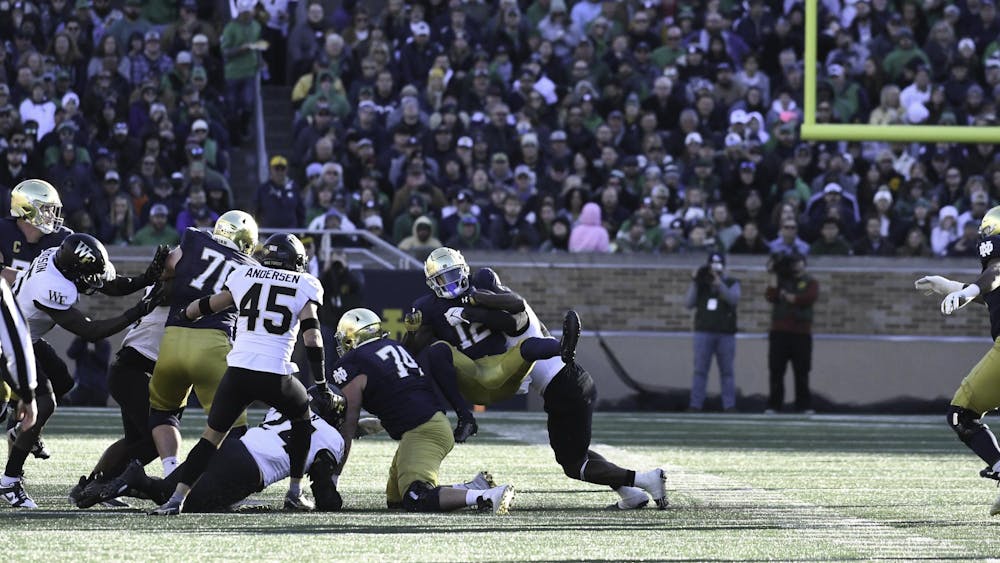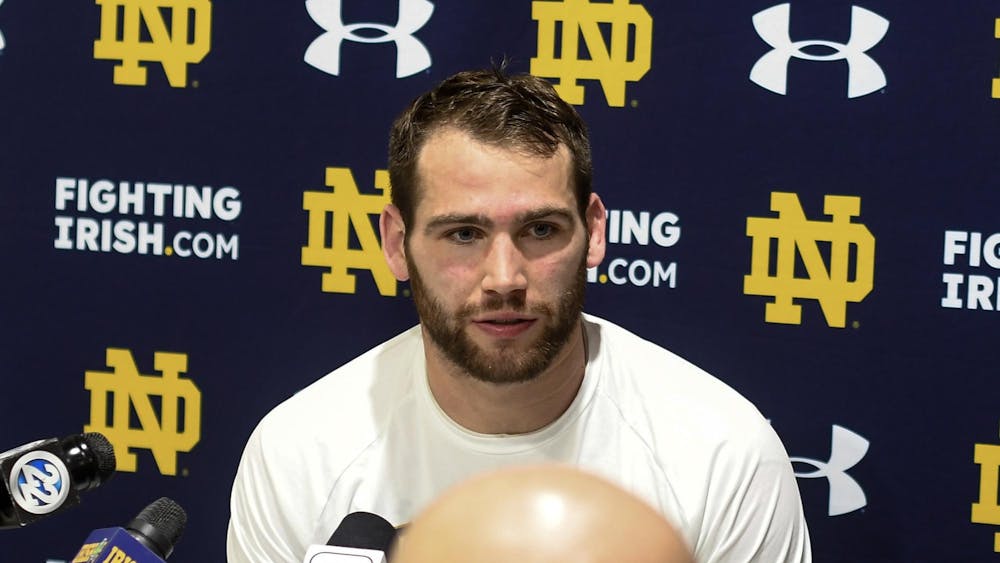During their exhibition games this year, ACC men's basketball teams experimented with a 30-second shot clock.
I was not a fan.
So now that I already sound like a curmudgeonly 75-year-old man who was around to see Oscar Robertson at Cincinnati, I might as well get this out of the way too:
I don't like the shot clock at all.
For me, one of the greatest beauties in the sport of basketball is its nature as a great equalizer — both teams have roughly the same number of possessions and often, the same number of chances to score.
Another beautiful thing? Take a walk into high school gyms all across the country (well, in states without a shot clock) and you'll find such a wide range of playing styles. Some teams will play a 2-3 zone, others a 3-2 or 1-2-2. Other teams will play man defense. Some teams pressure the ball in the backcourt. Others wait for the pressure to come to them. And others just give opponents "32 minutes of hell" — full-court pressing the entire game.
That doesn't even touch on the offensive styles.
You'll see some teams that just try and get out on the break — or the full-court press teams that quickly take turnovers and turn them into baskets. Other times, you'll find teams run what appears to be the standard type of offense we see in college and in the pros — they don't necessarily move quickly but they typically take the first "good" shot opportunity. Teams without size might focus on perimeter shooting while teams with it will probably focus on feeding the ball to those guys.
And then there are the deliberate teams — the ones I'm really getting at when I mention my hate of the shot clock. If a team wants — often if it doesn't have the talent — it can pick and prod at a defense until the perfect shot opportunity comes up. Whether that's getting a sharpshooter a 3-point attempt or a guard a clear path to the basket, these teams are able to get high-percentage shots every single possession.
The tactical back and forth that ensues when one team is deliberate is beautiful. Should the defense apply more pressure to its opponent's ball handlers, knowing that in doing so, they can surrender a good look? Or should they sit back, hold tight, but know that its opponent might run two or three minutes of the clock before finally putting up a shot?
That cat-and-mouse game? It can't happen with a shot clock. In college, after 35 seconds, you have to shoot. Period. It's barely enough time to properly run an offense and artificially speeds the game up.
Or does it? When the NCAA first introduced a shot clock in 1985, it was 45 seconds. In the grand scheme of things, not much changed. But when the NCAA shortened that to 35 seconds in 1993, the pace of play slowed down, rather than speeding up — the opposite of what they intended — because coaches became more conscious of making the most out of each possession.
Now, I know it sounds like I'm complaining about teams being more deliberate just a couple of paragraphs after calling that deliberate back-and-forth beautiful. And it is beautiful. Just not when every team is artificially influenced to be deliberate.
You see, when the idea of a shot clock was first introduced to the NBA in 1954, its purpose was to stop teams from holding the ball and make them actually, well, play. It came, in part, thanks to games like one in 1950, when the Pistons and Lakers — then in Fort Wayne, Indiana, and Minneapolis, mind you — played a 19-18 game after Fort Wayne stalled to keep the ball from Lakers star George Mikam.
But basketball didn't have the five-second violation at the time — it wasn't introduced until the 1980s and has never been introduced in the NBA. The rule keeps teams from being able to stand there and stall. All the defense has to do is come out and guard the player. That's it. It is the game's paramount stall deterrent.
We don't need the shot clock, let alone a 30-second one. Period.
Now, if you'll excuse me, I'm going to see if that Texas Western team can knock off Adolph Rupp's big, bad Kentucky in the national championship game.













